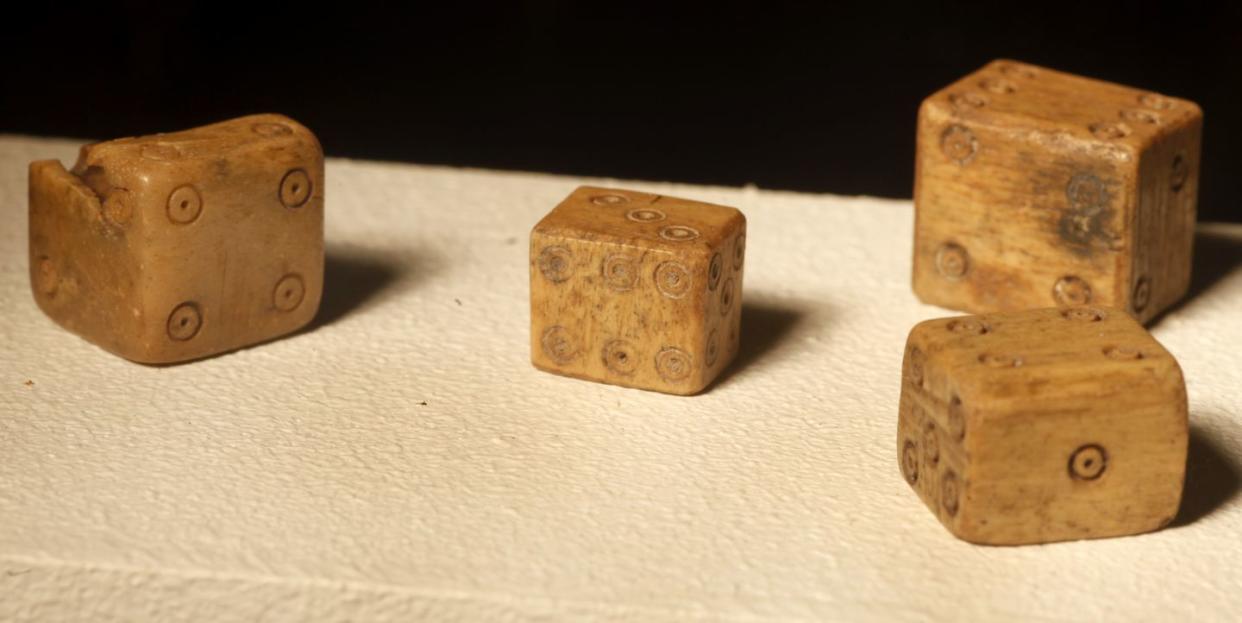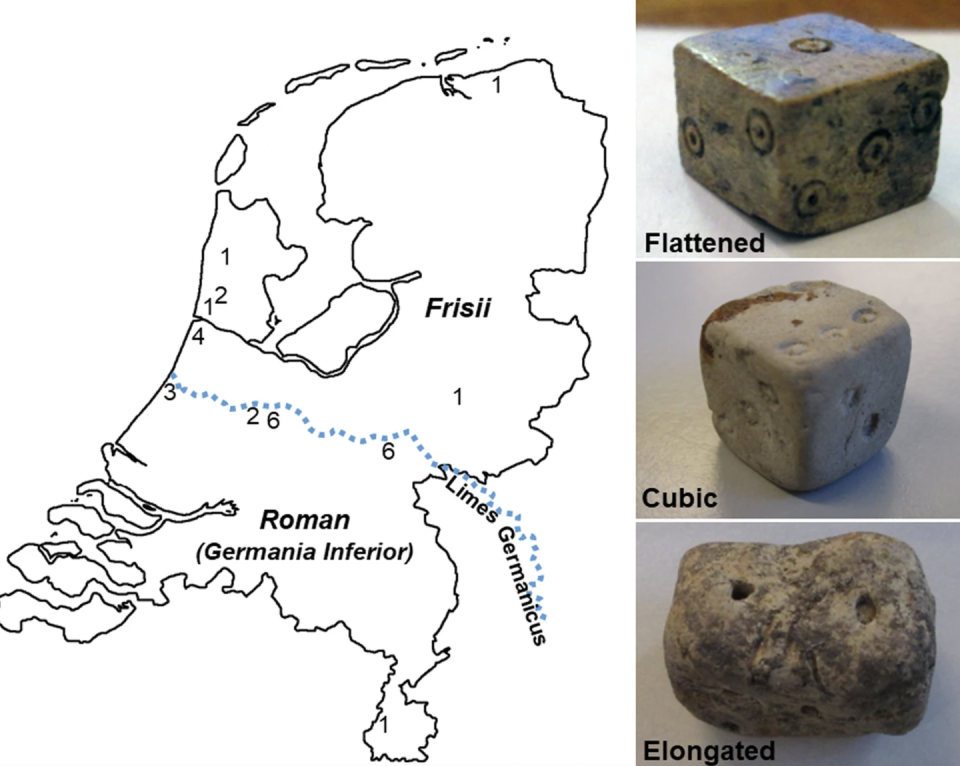Why Ancient Romans Used Asymmetrical Dice With Lopsided Probabilities

"Hearst Magazines and Yahoo may earn commission or revenue on some items through the links below."
The asymmetric design of dice from the Roman Empire had an impact on probabilities.
Those playing dice-based games during the Roman Empire’s reign may not have worried about probabilities, believing dice games were a “product of fate.”
The exacting nature of modern-day six-sided cubed dice evens out probabilities when rolling a single die.
Six-sided dice from the ancient Roman Empire left little to fate—even if those playing with the dice believed fate decided the outcomes of their games.
A recent study from Jelmer Eerkens of the University of California, Davis and Alex de Voogt of Drew University in Madison, New Jersey, looked at the asymmetrical shapes of Roman-era dice to zoom in on their lopsided probabilities.
🎲 You love ancient history. So do we. Let’s nerd out over it together—join Pop Mech Pro.
The popular game of the day, taberna (similar to backgammon), featured dice made of bone, metal, or clay. With six-sided dice a common archeological find across Europe, the researchers studied 28 well-dated Roman-period dice and found that 24 of them were asymmetrical. Some were so anti-cube-like that the highly parallelepiped dice (meaning all of its faces are parallelograms) had one side over 50 percent longer than the short side! The pair argue that the extreme variation wasn’t meant to even out probabilities, promote a certain number, or even offer up cheater-style dice; it was simply a matter of culture.
“We argue that such extreme variation was acceptable because makers and users understood roll outcomes as the product of fate, rather than chance or probability,” the researchers say in their paper, published in the journal Archaeological and Anthropological Sciences. “Conforming to a true symmetrical cube was not perceived as essential to die function, and asymmetrical forms were tolerated as simply a part of the acceptable range in shape variation.”
In modern-day probability, where a six-sided die gets manufactured to specified equality, the probability of rolling any single number is about 16.667 percent. Of course, if you pair two dice and then start mixing in the mathematics of adding the two numbers together, the probabilities take on a much different perspective. Rolling a 2 or a 12, for example, drops to 2.778 percent probability, whereas rolling a 7 remains at 16.667 percent. You have about a 13.889 percent chance of rolling a 6 or an 8, while 5 and 9 come in at 11.111 percent, 4 and 10 at 8.333 percent, and 3 and 11 at 5.556 percent.
In Roman times, according to the research, the difference in the sizes of the sides could impact the odds of a single die, on average, anywhere from a modern-day convention of 1-in-6 to as much as 1-in-2.4.
The researchers believe the disregard for probability came from the belief in fate ruling the day. Researchers had 23 modern-day students place pips on reproductions of the asymmetrical Roman dice, but without any explanation as to why (that way they couldn’t cheat). Every one of the students in the study started with a 1 on the largest side, which meant the corresponding number added a 6 on the other larger side. Researchers figured this was simply a matter of ease, both from putting the largest number on the largest face and the fact that people start in chronological order.

“Our results show a production bias, where makers place the 6 on the largest die face, not to favor certain rolls, but due to space limitations and/or the order in which they place the pips,” the authors note.
This gels with other patterns in dice asymmetry that the researchers found over centuries of time, including in preceding Iron Age periods.
With no clear pattern for the asymmetrical nature of the historic dice, the obvious visual differences of the side sizes, and research that the flat-sided die favor 1 and 6 by mere human chance, the researchers believe there was no clear planning in the asymmetrical dice production.
“Today’s preference for a cubic, rather than an asymmetrical form, as well as a broad understanding of probability,” the paper says, “contrasts that of the Roman world as well as that of some of its neighbors.” Maybe we all should just appreciate math a little bit more.
You Might Also Like

